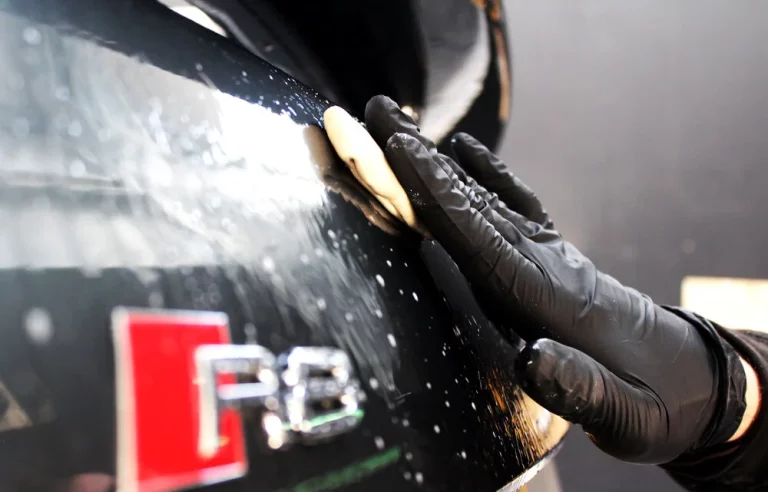What is the best lubricant for rubber seals?
Delving into the world of rubber seals and O-rings opens up a realm of crucial maintenance practices.
Among these, the choice of lubricant stands out as a crucial factor in ensuring longevity and efficient operation.
Let’s explore the realm of lubricants and discover the best option for your rubber seals.
what is the best lubricant for rubber seals
The best lubricant for rubber seals, especially O-rings, is synthetic lubricants like silicone-based and ester-based greases.
These lubricants provide reduced friction, waterproofing, temperature stability, and biodegradability, ensuring proper function and longevity of the seals.
Synthetic lubricants are recommended for rubber O-rings due to their superior performance and safety compared to other options like petroleum distillates and solvents.
Reapplication of synthetic lubricants should be done based on the specific application requirements to maintain optimal sealing efficiency.
Key Points:
- Synthetic lubricants like silicone-based and ester-based greases are the best for rubber seals, especially O-rings
- They offer reduced friction, waterproofing, temperature stability, and biodegradability
- Synthetic lubricants are preferred over petroleum distillates and solvents for rubber O-rings due to superior performance and safety
- Regular reapplication of synthetic lubricants is necessary based on specific application requirements
- Synthetic lubricants ensure proper function and longevity of rubber seals
- They help maintain optimal sealing efficiency and are recommended for use with rubber O-rings
Check this out:
💡 Did You Know?
1. Rubber seals can be best lubricated with silicone grease, as it is compatible with most types of rubber and offers superior water resistance.
2. A lesser-known alternative to silicone grease for rubber seals is glycerin, which can help maintain flexibility and prevent cracking over time.
3. Did you know that using petroleum-based lubricants on rubber seals can cause deterioration and swelling of the material? It’s best to avoid these types of lubricants.
4. One unique way to extend the lifespan of rubber seals is by applying a thin layer of talcum powder on them before installation. This can help prevent sticking and reduce friction.
5. In certain applications, such as with high-pressure hydraulic systems, specialized synthetic lubricants made specifically for rubber seals may be recommended for optimal performance and longevity.
Importance Of Lubricating O-Rings
- Rubber seals, specifically O-rings, play a crucial role in ensuring the proper functioning and longevity of various mechanical systems.
- These seals are commonly used in machinery, plumbing systems, automotive engines, and many other applications to prevent leakage of fluids and gases.
- However, without proper lubrication, O-rings can quickly degrade and fail, leading to potential leaks and system malfunctions.
- Lubricating O-rings is essential to protect them from damage caused by friction, heat, chemicals, and environmental factors.
- It helps in maintaining the flexibility and integrity of the rubber material, ensuring a tight and secure seal.
Protecting Seals With Lubrication
- Lubrication acts as a barrier between the rubber seal and the surfaces it comes into contact with, reducing friction and wear. By creating a thin film of lubricant, the O-ring can move smoothly within its housing, minimizing abrasion and extending its lifespan. Additionally, lubrication helps to seal out moisture, dust, and other contaminants that could degrade the seal over time. Without proper lubrication, O-rings can become stiff, brittle, and prone to cracking, leading to leaks and potential system failures. Therefore, applying the right lubricant is crucial to protecting rubber seals and maintaining their efficiency.
Proper Lubrication Methods
When it comes to lubricating rubber seals like O-rings, proper application methods are essential to ensure optimal performance.
Before installing the O-ring, it is important to apply a thin, uniform coating of the lubricant to the seal’s surface. This can be done using a brush, cloth, or specialized lubrication tool to ensure even coverage.
Care should be taken to avoid using too much lubricant, as excess can attract dirt and debris, leading to potential contamination issues.
Proper lubrication methods not only protect the O-ring during installation but also contribute to its long-term durability and functionality.
- Apply a thin, uniform coating of lubricant before installation
- Avoid using excessive lubricant to prevent contamination
- Use appropriate tools for even coverage of the seal’s surface
Common Lubricant Options
There are various lubricant options available for lubricating rubber seals, each offering different properties and benefits. Common lubricants include:
- Petroleum distillates
- Solvents
- Soap and water solutions
- Polymers
- Ester-based greases
While these lubricants may provide adequate protection in some applications, synthetic lubricants are often preferred for rubber O-rings due to their superior performance characteristics. Synthetic lubricants, such as silicone-based and ester-based greases, offer advantages like:
- Reduced friction
- Enhanced waterproofing
- Temperature stability
- Biodegradability
These qualities make them ideal choices for ensuring the longevity and efficiency of rubber seals.
Remember, choosing the right lubricant is crucial for maximizing the performance and lifespan of rubber seals.
Recommended Synthetic Lubricants
When it comes to lubricating rubber O-rings, synthetic lubricants are highly recommended for their advanced properties and compatibility with rubber materials.
- Silicone-based lubricants are popular choices for their resistance to high temperatures, oxidation, and chemical exposure.
- Ester-based greases are also favored for their compatibility with a wide range of materials, including rubber, and their ability to maintain lubricity over a broad temperature range.
These synthetic lubricants offer superior protection and performance compared to traditional lubricants, making them the ideal choice for ensuring the reliability and longevity of rubber seals in various applications.
Benefits Of Synthetic Lubricants
Synthetic lubricants provide numerous benefits when used to lubricate rubber O-rings:
- Superior lubrication properties reduce friction between the seal and mating surfaces, preventing premature wear and tear.
- Excellent waterproofing properties protect the seal from moisture ingress and environmental exposure.
- Temperature stability ensures consistent performance in high and low-temperature environments, enhancing versatility for various applications.
- Biodegradability makes synthetic lubricants environmentally friendly choices for lubricating rubber seals while maintaining optimal performance.
By using synthetic lubricants, you can enhance the longevity and effectiveness of rubber O-rings while also being mindful of environmental impact.
- Improved lubrication properties
- Enhanced waterproofing
- Temperature stability
- Biodegradable options
Synthetic Lubricants For Natural Rubber
While synthetic lubricants are typically recommended for rubber O-rings due to their superior properties, they can also be effectively used on natural rubber products. Synthetic lubricants provide the same benefits of reduced friction, enhanced sealing, and environmental protection when applied to natural rubber seals. Whether it is silicone-based or ester-based lubricants, these synthetic options offer compatibility with both synthetic and natural rubber materials, ensuring reliable performance and longevity of the seals in various applications. Using synthetic lubricants on natural rubber products can help protect the seals from degradation and extend their service life significantly.
- Synthetic lubricants are recommended for rubber O-rings
- Synthetic lubricants can be used on natural rubber products
- Provide benefits of reduced friction, enhanced sealing, and environmental protection
- Compatibility with synthetic and natural rubber materials
“Using synthetic lubricants on natural rubber products can help protect the seals from degradation and extend their service life significantly.”
Reapplication Considerations
In determining the frequency of reapplication of lubricants for rubber seals, specific considerations must be taken into account based on the application requirements. Factors such as operating conditions, temperature variations, exposure to chemicals, and wear and tear can influence the longevity of the lubricant film on the O-ring. Regular inspection of the seal’s condition and performance can help determine when reapplication of lubricant is necessary. In high-stress environments or applications where frequent movement of the seal occurs, more regular reapplication of lubricant may be required to maintain optimal performance and protection. By considering these factors and establishing a maintenance schedule, the longevity and efficiency of rubber seals can be maximized.
FAQ
What lubricant can be used on rubber seals?
A suitable lubricant for rubber seals could be silicone spray. Silicone spray has properties that help protect rubber seals from drying out and deteriorating, ultimately extending their lifespan. It also provides a smooth surface for the seals to function properly without causing any damage.
Is WD-40 safe for rubber seals?
While WD-40 can be effective for many uses, it is not considered safe for rubber seals. The chemicals in WD-40 can cause rubber to deteriorate over time, potentially leading to leaks or damage. It is best to use a lubricant specifically designed for rubber seals to ensure their longevity and effectiveness in sealing.
What lubricant doesn’t damage rubber?
When searching for a lubricant that won’t harm rubber, silicone-based lubricants are the best choice. Silicone lubricants are known for their compatibility with rubber and plastic materials, making them a safe option for maintaining the integrity of such components. By opting for a silicone lubricant, you can protect your rubber parts while ensuring smooth and effective lubrication for various mechanisms and applications.
Is lithium grease OK on rubber?
Although lithium grease is available in various colors and is hydrocarbon-based, it is not recommended for use on rubber materials. The properties of lithium grease can actually be damaging to rubber components, causing deterioration and potential long-term issues. It’s best to opt for a grease specifically formulated for rubber if lubrication is needed for such materials, to ensure their longevity and performance are not compromised.



